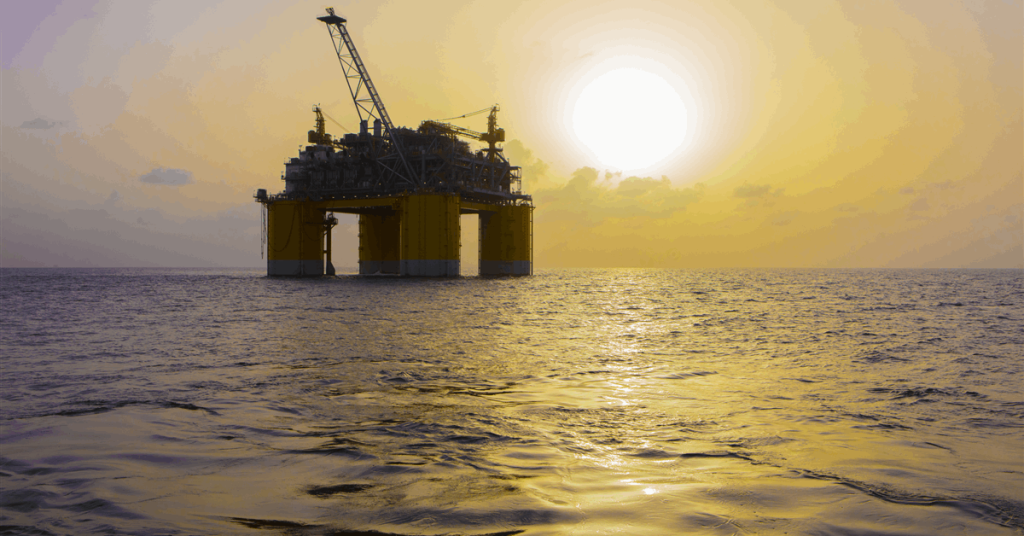BP PLC has announced a positive FID (final investment decision) on the Tiber-Guadalupe oil project in the Gulf of America, which involves installing a new production platform with a capacity of 80,000 barrels per day (bpd).
Targeted to be put onstream 2030, the project will build the British energy giant’s seventh operated Gulf production platform, called Tiber. Along with the under-construction Kaskida project, the Tiber and Guadalupe fields will grow the company’s Gulf production to over 400,000 barrels of oil equivalent (boe) a day, BP said in a statement on its website.
“Our decision to move forward on the Tiber-Guadalupe project is a testament to our commitment to continue investing in the Gulf of America and expand our energy production from one of the premier basins in the world”, said Andy Krieger, BP senior vice president for Gulf of America and Canada.
BP estimates around 350 million boe of recoverable resources from Tiber and Guadalupe in the initial phase. With an estimated investment of $5 billion, the project consists of six wells in Tiber and a two-well tieback in Guadalupe.
“Additional wells could be drilled in future phases, subject to further evaluation”, the statement said.
“BP is leveraging existing platform and subsea equipment designs to drive cost efficiencies across the Tiber-Guadalupe production hub’s construction, commissioning and operations”, BP said. “Tiber project development costs are anticipated to be around $3 per barrel lower than the Kaskida project, including synergies from using more than 85 percent of the design from BP’s Kaskida project”.
Gordon Birrell, executive vice president for production and operations at BP, said, “Tiber-Guadalupe represents a significant step forward in our efforts to unlock the potential of the Paleogene in the Gulf of America, building on our decades of experience in the region. Together with our Kaskida project in the Paleogene, we expect Tiber-Guadalupe will be another world-class development”.
BP announced a FID on Kaskida, which also has a capacity of 80,000 bpd, on July 30, 2024. It aims to start up the six-well development 2029. The field holds an estimated 275 MMboe recoverable resources, according to BP.
Kaskida, Guadalupe and Tiber are in the Keathley Canyon area off the coast of New Orleans.
BP operates five already producing platforms in the Gulf of America: Argos, Atlantis, Mad Dog, Na Kika and Thunder Horse. It also owns non-operating stakes in the Great White, Mars, Olympus and Ursa platforms.
On August 4 BP announced the start of production at the Argos Southwest Extension project, adding 20,000 bpd of capacity to the Argos platform, which started up 2023.
The extension is one of three Gulf projects on a list of 10 across BP’s global portfolio that the company aims to complete by 2027. The other two Gulf projects on the list are Atlantis Drill Center I Expansion, which has a capacity of approximately 15,000 boed, and Atlantis Major Facility Expansion, which will boost production in the Atlantis field by injecting water to provide pressure support to reservoirs.
Tiber-Guadalupe meanwhile is among eight to 10 projects BP aims to start up 2028-30.
To contact the author, email jov.onsat@rigzone.com
What do you think? We’d love to hear from you, join the conversation on the
Rigzone Energy Network.
The Rigzone Energy Network is a new social experience created for you and all energy professionals to Speak Up about our industry, share knowledge, connect with peers and industry insiders and engage in a professional community that will empower your career in energy.
element
var scriptTag = document.createElement(‘script’);
scriptTag.src = url;
scriptTag.async = true;
scriptTag.onload = implementationCode;
scriptTag.onreadystatechange = implementationCode;
location.appendChild(scriptTag);
};
var div = document.getElementById(‘rigzonelogo’);
div.innerHTML += ” +
‘‘ +
”;
var initJobSearch = function () {
//console.log(“call back”);
}
var addMetaPixel = function () {
if (-1 > -1 || -1 > -1) {
/*Meta Pixel Code*/
!function(f,b,e,v,n,t,s)
{if(f.fbq)return;n=f.fbq=function(){n.callMethod?
n.callMethod.apply(n,arguments):n.queue.push(arguments)};
if(!f._fbq)f._fbq=n;n.push=n;n.loaded=!0;n.version=’2.0′;
n.queue=[];t=b.createElement(e);t.async=!0;
t.src=v;s=b.getElementsByTagName(e)[0];
s.parentNode.insertBefore(t,s)}(window, document,’script’,
‘https://connect.facebook.net/en_US/fbevents.js’);
fbq(‘init’, ‘1517407191885185’);
fbq(‘track’, ‘PageView’);
/*End Meta Pixel Code*/
} else if (0 > -1 && 80 > -1)
{
/*Meta Pixel Code*/
!function(f,b,e,v,n,t,s)
{if(f.fbq)return;n=f.fbq=function(){n.callMethod?
n.callMethod.apply(n,arguments):n.queue.push(arguments)};
if(!f._fbq)f._fbq=n;n.push=n;n.loaded=!0;n.version=’2.0′;
n.queue=[];t=b.createElement(e);t.async=!0;
t.src=v;s=b.getElementsByTagName(e)[0];
s.parentNode.insertBefore(t,s)}(window, document,’script’,
‘https://connect.facebook.net/en_US/fbevents.js’);
fbq(‘init’, ‘1517407191885185’);
fbq(‘track’, ‘PageView’);
/*End Meta Pixel Code*/
}
}
// function gtmFunctionForLayout()
// {
//loadJS(“https://www.googletagmanager.com/gtag/js?id=G-K6ZDLWV6VX”, initJobSearch, document.body);
//}
// window.onload = (e => {
// setTimeout(
// function () {
// document.addEventListener(“DOMContentLoaded”, function () {
// // Select all anchor elements with class ‘ui-tabs-anchor’
// const anchors = document.querySelectorAll(‘a .ui-tabs-anchor’);
// // Loop through each anchor and remove the role attribute if it is set to “presentation”
// anchors.forEach(anchor => {
// if (anchor.getAttribute(‘role’) === ‘presentation’) {
// anchor.removeAttribute(‘role’);
// }
// });
// });
// }
// , 200);
//});

